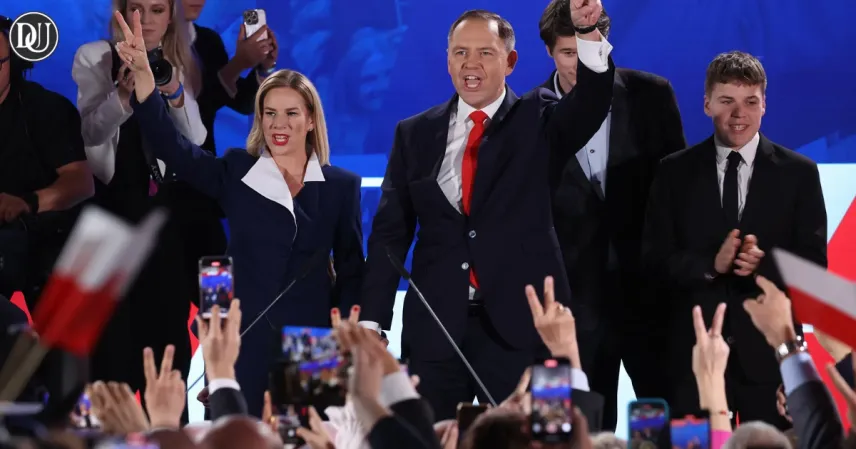Poland is at a historic juncture following one of the closest presidential races in its post-communist history. The Poland presidential elections have captured national and international attention as voters turned out in record numbers—over 70%—to decide between two starkly different visions for the country.
The election saw Warsaw’s liberal mayor, Rafał Trzaskowski, go head-to-head with conservative nationalist Karol Nawrocki. Trzaskowski represents the centrist Civic Coalition, closely aligned with Prime Minister Donald Tusk, while Nawrocki was backed by the right-wing Law and Justice (PiS) party, known for its conservative and nationalist agenda.
Initial exit polls painted a dramatic picture. The first Ipsos poll showed Trzaskowski slightly ahead with 50.3% to Nawrocki’s 49.7%, but the lead was well within the 2% margin of error. A later poll flipped the numbers, giving Nawrocki a slight edge with 50.7%. With such tight margins, both camps claimed victory, and the nation is anxiously awaiting the official results.
Two Competing Visions for Poland
At the heart of the Poland presidential elections is a clash between two opposing ideologies.
Trzaskowski has campaigned on promises to restore judicial independence, enhance civil liberties, and reinforce Poland's place within the European Union. He is seen as a champion of liberal democracy and pro-European values, aiming to reverse many of the changes made by the previous conservative government.
In contrast, Nawrocki offers a nationalist vision. He vows to uphold traditional Catholic values, resist what he sees as EU overreach, and continue policies that emphasize national sovereignty. His campaign emphasized “Polish pride,” cultural conservatism, and skepticism of Brussels, resonating deeply with voters in rural and older communities.
This clear ideological divide has made the Poland presidential elections not just about personalities but about the future direction of the country on both domestic and international fronts.
What's at Stake?
While the president of Poland does not wield executive power like a prime minister, the position holds considerable authority. The president can veto legislation, appoint judges, and play a key role in shaping foreign policy.
A win for Trzaskowski would strengthen Prime Minister Tusk’s ability to push through reforms aimed at restoring democratic norms and rebuilding ties with the EU. On the other hand, a Nawrocki presidency could obstruct Tusk’s legislative agenda and bring Poland into deeper alignment with Hungary’s model of nationalist governance.
The outcome of the Poland presidential elections will significantly influence Poland's stance on key issues such as judicial independence, LGBTQ+ rights, media freedom, and the ongoing war in Ukraine.
The European and Global Context
This election doesn't exist in a vacuum. The outcome has implications for the European Union, NATO, and the balance of power in Eastern Europe. Poland, as one of the EU’s largest and most influential eastern members, plays a strategic role in the region’s security and energy policy.
Trzaskowski’s victory would likely lead to warmer relations with Brussels and more consistent support for Ukraine, aligning Poland more closely with Western European democracies. A Nawrocki win might result in a more confrontational approach toward the EU and a more domestically focused, nationalist foreign policy.
These concerns were evident in the voter turnout and intensity of political debate leading up to the Poland presidential elections. Both candidates worked tirelessly to mobilize their base, knowing the stakes were far higher than a simple transfer of power.
A Deeply Divided Nation
The closeness of the vote and the contrasting visions offered by the candidates reflect a deeply divided Poland. Urban centers, younger voters, and more liberal demographics leaned toward Trzaskowski, while Nawrocki found strong support in rural areas, among older voters, and in communities that felt left behind by globalization and EU integration.
This division is expected to persist, regardless of who is declared the winner. Reconciliation and unity will be a monumental challenge for the next president, who must govern a nation sharply split along ideological, generational, and geographic lines.
As the final results of the Poland presidential elections are awaited, one thing is clear: Poland is standing at a political and cultural crossroads. The direction it chooses will reverberate not only across its own borders but throughout Europe.










